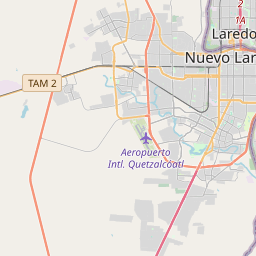Biggio-Kowalski-De La Garza House
Historical marker location:






Chester C. Biggio, a railroad official and the city's first fire chief, had this home built in 1909 for his family. He died in 1923, and in 1938 his widow Laura Blossman Biggio sold the house to Louis and Dorothy Kowalski. They lived here with their six children until 1948. Leonor de La Garza bought the house in 1965; her sister Fidela inherited it in 1973. The house is a good example of the American foursquare form.
Recorded Texas Historic Landmark - 1996
As one of the most visible programs of the Texas Historical Commission (THC), historical markers commemorate diverse topics in Texas history, including: the history and architecture of houses, commercial and public buildings, religious congregations, and military sites; events that changed the course of local and state history; and individuals who have made lasting contributions to the state, community organizations, and businesses.
The University of Texas at Austin, founded in 1883, is one of the largest universities in the United States and has produced many notable alumni, including several U.S. presidents.
During the 19th century, Webb County played a crucial role in the struggle for Mexican independence and the subsequent development of the Texas Republic. In 1836, during the Texas Revolution, Mexican troops led by General José de Urrea were defeated by the Texian forces at the Battle of San Patricio, which took place near present-day San Patricio, a community within Webb County.
Following the Texas Revolution, Laredo became an important trading center, connecting the United States and Mexico. The city's location along the Rio Grande made it a key point for trade and transportation, leading to its rapid growth. In 1848, the Treaty of Guadalupe Hidalgo ended the Mexican-American War, and Laredo became part of the United States.
The late 19th and early 20th centuries brought significant changes to Webb County. The arrival of the railroad in the 1880s further stimulated economic growth, as it provided an efficient means of importing goods and exporting local agricultural products. This led to the expansion of ranching and agriculture industries in the region. Additionally, the discovery of oil and gas reserves in the early 20th century brought further prosperity and development to the county.
Today, Webb County continues to thrive as a bustling border city and a hub of trade between the United States and Mexico. With a rich cultural heritage and a vibrant economy, the county serves as an important intersection of history, commerce, and diversity in Texas.
Webb County Timeline
This timeline provides a concise overview of the key events in the history of Webb County, Texas.
- 1848 - Webb County is established as a county in the state of Texas.
- 1849 - The first permanent settlers arrive in what is now known as Laredo, the county seat of Webb County.
- 1852 - The county's first courthouse is built in Laredo.
- 1860 - The population of Webb County reaches over 4,000 residents.
- 1881 - The Texas-Mexican Railway reaches Laredo, leading to increased trade and development in the county.
- 1906 - A new courthouse is built in Laredo to replace the previous one.
- 1944 - The Laredo Air Force Base is established, contributing to the county's economy and providing employment opportunities.
- 1977 - The Rio Grande Industrial Park is opened, promoting industrial development in Webb County.
- 2010 - Webb County's population exceeds 250,000 residents.